Artificial Intelligence work by mimicking human intelligence processes. It uses machine learning, deep learning, and neural networks to process and interpret data. Machine learning equips the AI to improve from experience, while deep learning, a subset of machine learning, utilizes multi-layered neural networks to learn data representations. Natural language processing enables the AI to understand and generate human language. AI functions by recognizing patterns and making decisions based on abundant data. The capabilities and potential applications of AI are vast and multifaceted, a richness that a further exploration of the subject will certainly reveal.
Main Points
- Artificial Intelligence simulates human intelligence by processing large data volumes to recognize patterns and make decisions.
- Machine learning, a subset of AI, involves training algorithms with large datasets to identify patterns for decision-making.
- Deep learning uses multi-layer neural networks, mimicking the human brain’s neurons, to learn complex patterns from vast datasets.
- Natural Language Processing, a key AI component, enables machines to understand and generate human-like language.
- The functioning of AI depends on constant learning and adaptation, refining its abilities to comprehend and react to new information.
Understanding How Artificial Intelligence Work
Digging deeper into Artificial Intelligence (AI), it is crucial to grasp that it encompasses the simulation of human intelligence processes by machines specifically crafted to perform tasks and solve problems. AI is not a monolithic concept; rather, it is a vast field with a plethora of subfields, including machine learning, deep learning, and neural networks. These systems work by processing large volumes of data and utilizing significant computing power to recognize patterns and make data-driven decisions.
Machine learning, a subset of AI, involves systems learning from data, identifying patterns, and making decisions with minimal human intervention. Deep learning, mimics the functionality of the human brain in processing data for decision-making. It leverages neural networks with multiple layers for data processing and pattern recognition.
AI’s complexity also extends to natural language processing, enabling machines to comprehend and respond to human language. AI is a fusion of diverse systems, tools, and algorithms, all working in harmony to simulate human intelligence in machines. It is the integration of data, learning processes, computing power, and intricate algorithms that make AI a potent and transformative tool.
History of Artificial Intelligence
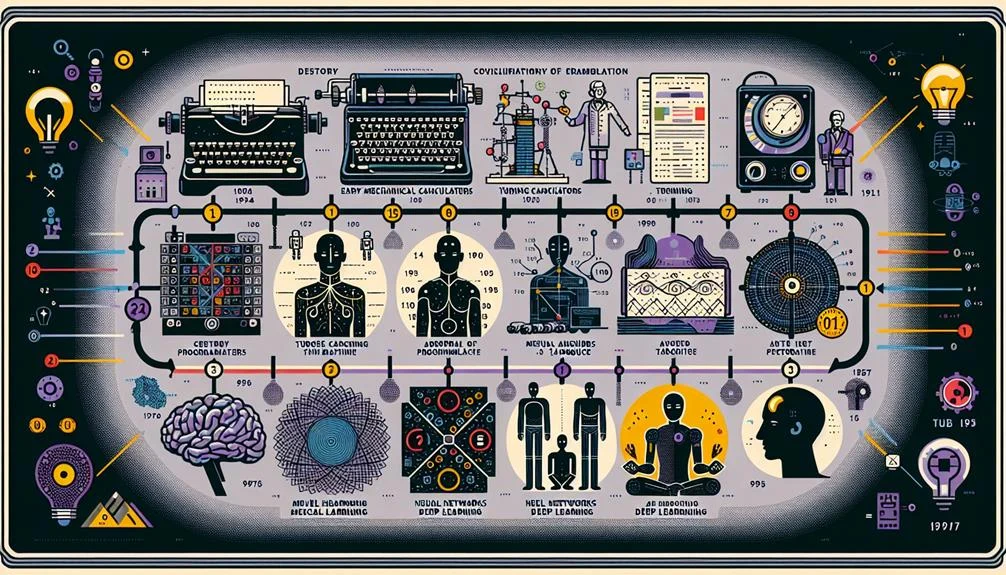
While the concept of artificial intelligence has roots in ancient mythology and philosophy, the term itself was first introduced in 1956 at the Dartmouth Conference, marking the birth of AI as a formal academic discipline. This heralded the beginning of an era characterized by early research into symbolic problem-solving methods and expert systems.
The 1990s saw a revitalization of AI research, propelled by advancements in machine learning algorithms and neural networks. These developments engendered a multitude of practical AI applications.
Deep learning techniques began to gain traction in the 2010s, facilitating breakthroughs in computer vision, natural language processing, and speech recognition. The history of artificial intelligence is a demonstration of human ingenuity and determination, showing how ongoing advancements continue to shape AI technologies.
| Era | Key Development | Impact |
|---|---|---|
| 1950s | Dartmouth Conference | Birth of AI |
| 1960-80s | Early Research | Foundation of AI |
| 1990s | Machine Learning & Neural Networks | Practical AI Applications |
| 2010s | Deep Learning Techniques | Breakthroughs in AI capabilities |
| Present | Ongoing Advancements | Shaping Future of AI |
Basics of Machine Learning

Peering into the heart of artificial intelligence, one encounters the critical subset known as machine learning. This discipline focuses on crafting algorithms that empower computers to learn and make decisions from data. Machine learning is a game-changer, transforming data into actionable knowledge.
The essence of machine learning can be distilled into four fundamental steps:
- Data Acquisition: This is the initial stage where large volumes of data are gathered for training the algorithms.
- Algorithm Selection: Depending on the task, different algorithms are chosen. This can range from supervised learning for labeled data to unsupervised learning for unlabeled data, or reinforcement learning for decision-making tasks.
- Training: The selected algorithm is then trained with the acquired data, learning to identify patterns and correlations.
- Decision Making: Once trained, the algorithm can make informed decisions or predictions based on the learned patterns.
These steps are facilitated by applying statistical techniques that allow the machine to improve its performance progressively. The ultimate goal of machine learning is to enable computers to learn autonomously and adapt their decisions without human intervention, bringing us one step closer to fully realized artificial intelligence.
Deep Learning Explained
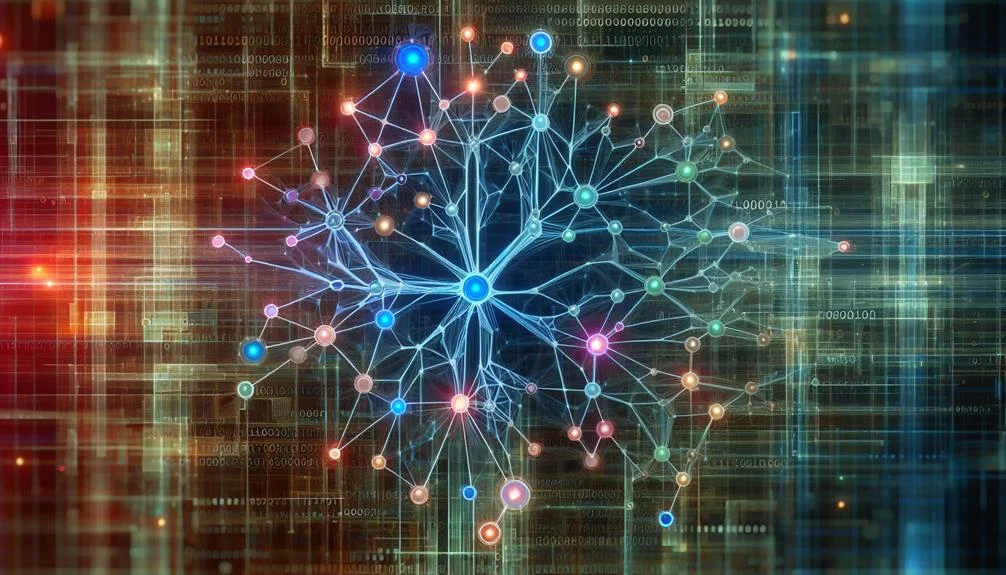
Deep learning is a highly sophisticated branch of artificial intelligence. It leverages multi-layered neural networks to learn intricate patterns from vast quantities of data, mirroring the functionality of the human brain. This technology relies heavily on the availability of large datasets for training, enhancing its accuracy and performance capabilities.
The transformative impact of deep learning can be seen in its application across various areas. These include image and speech recognition, natural language processing, and autonomous vehicle technology.
Understanding Neural Networks
In artificial intelligence, neural networks, designed to emulate the intricate web of neurons in the human brain, play a pivotal role indeep learning. These networks reflect the interconnected neurons of the brain, creating a system capable of recognizing complex patterns through multiple hidden layers.
- Deep learning utilizes neural networks to analyze large volumes of labeled data, facilitating sophisticated decision-making.
- Algorithms are employed to adjust the weights and biases in these networks, optimizing their predictive capabilities.
- The network’s multiple hidden layers enable the learning of complex patterns.
- The depth of these networks allows for hierarchical learning, further enhancing their decision-making abilities.
This understanding of neural networks is integral to grasping the mechanics behind artificial intelligence.
Importance of Data
Having established an understanding of neural networks in artificial intelligence, it is of equal importance to explore the significance of data in deep learning.
The essence of deep learning lies in its ability to process enormous amounts of data through layered neural networks, thereby identifying intricate patterns.
The performance of deep learning algorithms improves with the augmentation of quality training data. These algorithms adjust the weights of connections between neurons, enhancing their ability to identify complex patterns in vast datasets.
However, this process requires substantial computational power, underscoring the importance of advancements in hardware technologies.
Hence, the significance of data in deep learning is two-fold: it fuels the training of algorithms and drives their performance in identifying patterns.
Training Deep Learning Models
In deep learning, training neural networks emerge as a pivotal process involving multiple hidden layers that learn and extrapolate complex patterns from substantial amounts of labelled datasets. This methodical process of training encompasses several essential aspects:
- Backpropagation: This is the method by which the network learns, adjusting its weights and biases to minimize the prediction error.
- Gradient Descent: A technique used in conjunction with backpropagation to optimize the network’s performance.
- Hyperparameters Tuning and Regularization Techniques: These are used to prevent overfitting, improving the model’s ability to generalize.
- Data Quality and Network Architecture: Vital factors that greatly influence the effectiveness of the training process.
Consequently, training deep learning models requires a balance between data quality, network architecture, and computational resources.
Role of Neural Networks
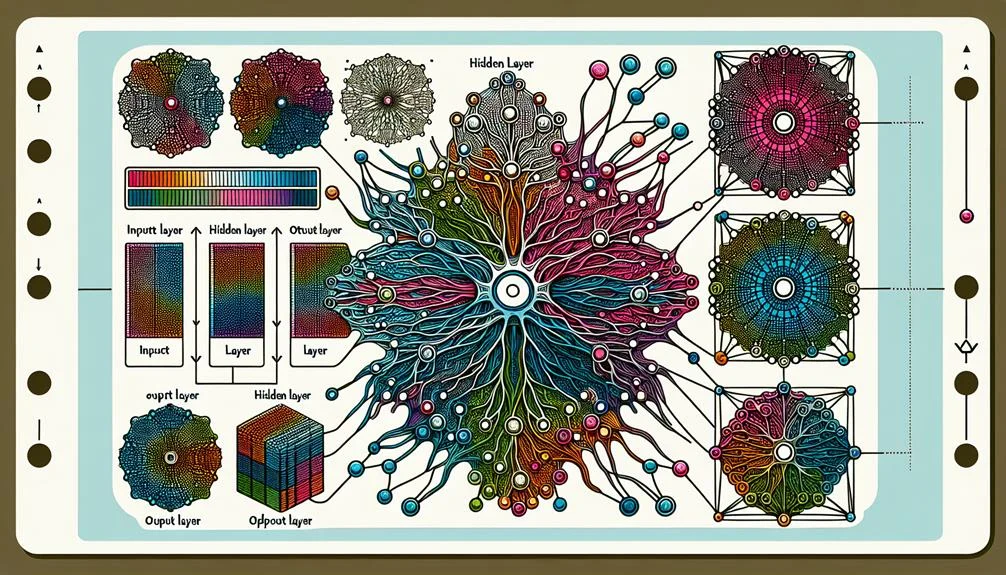
Central to the functioning of artificial intelligence, neural networks emulate the human brain‘s interconnected neurons, effectively processing information through layers of nodes that transmit signals and discern patterns from training on labeled data sets. This intricate process involves activation functions that introduce non-linearity into the network, enabling it to make complex decisions.
Deep learning, a sophisticated subset of neural networks, incorporates multiple hidden layers for advanced data processing and pattern recognition. These layers consist of numerous interconnected neurons that work collaboratively, thereby enhancing the network’s ability to discern patterns and make informed decisions.
Neural networks have proved indispensable in various AI applications, including image recognition and natural language processing. Their ability to learn and adapt from labelled data sets empowers them to recognize patterns in images and comprehend natural language, among other complex tasks.
In essence, the role of neural networks in artificial intelligence is to emulate human cognitive processes by learning from and making sense of data. Their dynamic structure and ability to learn from experience make them adept at handling complex data processing tasks, driving the advancement of artificial intelligence.
Significance of Natural Language Processing
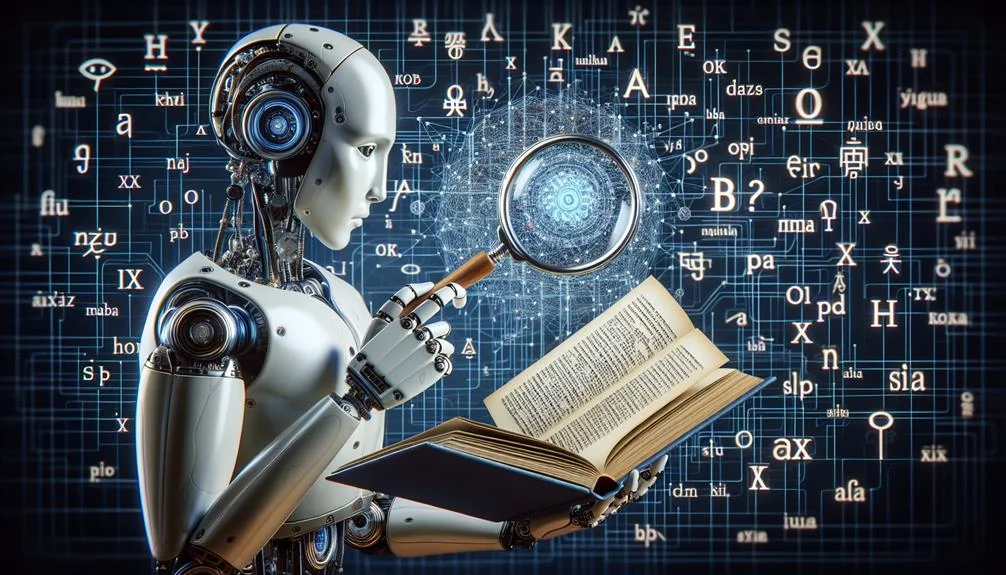
Natural Language Processing (NLP) is a critical component of artificial intelligence, facilitating human-like understanding and generation of language by machines. Its applications range from chatbots and virtual assistants to sentiment analysis and language translation, enhancing user interactions and enabling personalized experiences.
The continuous development and optimization of NLP models and techniques, such as BERT, GPT-3, and Transformer architectures, are shaping the future of AI, leading to more sophisticated and human-like interactions.
Understanding Natural Language Processing
In artificial intelligence, Natural Language Processing (NLP) emerges as a critical discipline, devoted to empowering machines with the capability to comprehend, interpret, and generate human language.
NLP’s significance is primarily four-fold:
- It facilitates the development of applications such as chatbots, enhancing user experiences through intelligent interactions.
- It enables sentiment analysis, allowing machines to understand and respond to user emotions effectively.
- It plays a pivotal role in language translation and speech recognition, breaking down communication barriers and creating a more inclusive digital environment.
- It fosters better human-machine communication, driving the evolution of virtual assistants like Siri, Alexa, and Google Assistant, thereby revolutionizing our interaction with technology.
Applications of NLP
Harnessing the power of artificial intelligence, Natural Language Processing (NLP) has found extensive applications in various areas, vastly reshaping the dynamics of human-machine interaction. NLP enables virtual assistants like Siri and Alexa to interpret and generate human language, enhancing user experience.
Similarly, chatbots utilize NLP for efficient customer service, while sentiment analysis leverages it to ascertain public opinion. Language translation services rely on NLP’s language models to bridge linguistic barriers, and social media platforms use it to monitor user-generated content.
Customer feedback analysis and voice recognition systems also benefit from NLP. In information retrieval, NLP categorizes documents, summarizes content, and extracts relevant information, thereby proving its indispensable role in modern technology.
Future of NLP Technology
Looking towards the future, NLP technology promises to revolutionize human-machine interactions by refining language comprehension and communication, thereby narrowing the existing gap between the two. NLP’s potential will be evident in several areas:
- Virtual assistants and chatbots: NLP will empower these tools to understand and respond to complex queries more accurately, enhancing personalized user experiences.
- Sentiment analysis: NLP will facilitate deeper insights into customer preferences and behavior through more nuanced analysis of unstructured text data.
- Language translation and speech recognition: Future NLP technology will improve the precision of language translation and speech recognition, promoting seamless global communication.
- Automated content generation and language modeling: NLP will drive innovation in these areas, generating content that’s indistinguishable from human-created text.
Potential Drawbacks of AI

While artificial intelligence offers many benefits, it also presents several potential drawbacks, including algorithmic bias leading to discriminatory outcomes, privacy issues stemming from extensive personal data collection, ethical and safety concerns over autonomous weapons, job displacement due to AI automation across industries, and challenges in ensuring accountability and transparency in AI decision-making processes.
Algorithmic bias can have far-reaching consequences as it can discriminate against certain groups, leading to unjust outcomes. Privacy concerns are heightened with AI’s extensive collection and use of personal data. Ethical and safety issues arise with the development of autonomous weapons powered by AI, as their deployment can cause widespread destruction without human intervention. Job displacement is another significant drawback of AI, as automation may render certain occupations obsolete.
Finally, maintaining accountability and transparency in AI decision-making processes is challenging, as it can be difficult to understand and explain how AI systems make certain decisions.
| Drawback | Consequence | Solution |
|---|---|---|
| Algorithmic Bias | Discrimination | Develop unbiased algorithms |
| Privacy concerns | Invasion of personal space | Enforce strict data protection regulations |
| Autonomous weapons | Safety and ethical issues | Implement international laws regulating their use |
| Job displacement | Unemployment | Upskill workforce for AI-centric jobs |
| Lack of transparency in AI decision-making | Accountability issues | Develop explainable AI systems |
AI’s potential drawbacks require careful consideration and proactive solutions to mitigate their impacts.
Future Prospects of Artificial Intelligence
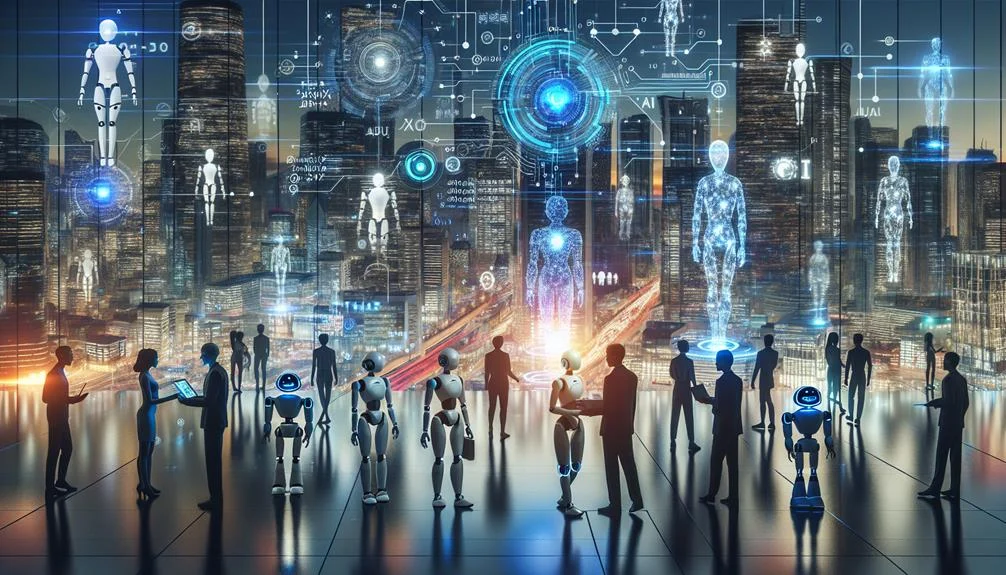
Projected to boost the global economy artificial intelligence technology stands at the precipice of unprecedented advancements and growth. The future prospects of AI technology are boundless, with continuous research and development paving the way for increasingly sophisticated systems.
- Revolutionizing Industries: Artificial intelligence holds the potential to revolutionize industries, from finance to healthcare. Its capabilities to analyze large datasets and make accurate predictions can transform decision-making processes.
- Significant Growth: With the adoption of AI technology still in its nascent stage, there is a significant potential for growth. As more sectors recognize the benefits of AI, we can expect a surge in its utilization.
- Innovation: Advancements in AI technology are likely to spur innovation across different sectors. The development of new AI-powered tools and applications can transform businesses and society.
- Boost to Global Economy: The significant growth and adoption of AI technology can provide a tremendous boost to the global economy. By increasing productivity and efficiency, AI can lead to economic prosperity.
Conclusion
To sum up, Artificial Intelligence, with its various capabilities, continues to revolutionize countless sectors. It’s a double-edged sword, offering tremendous benefits while posing potential risks. Therefore, a judicious approach is essential in harnessing its power.
As we stand on the brink of a paradigm shift, AI, like a phoenix reborn from its own ashes, promises to reshape our world, making it imperative to understand its workings and implications for a future where man and machine coexist.





